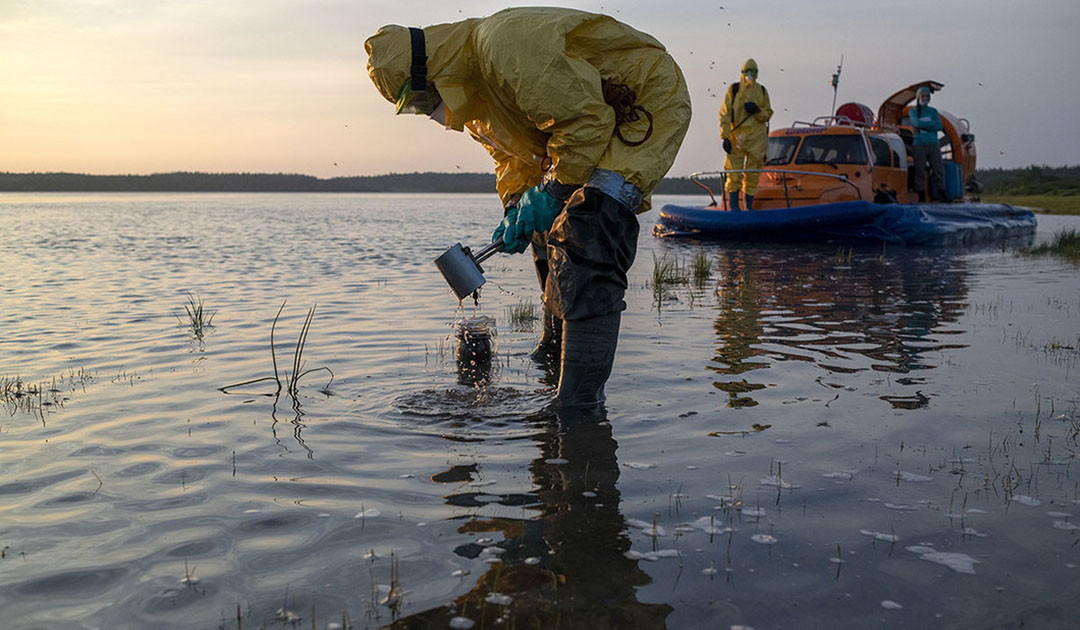
Several major environmental disasters have occurred in the Taymyr region of Siberia in recent months, including the accident at a combined heat and power plant in Norilsk, in which 21,000 litres of diesel leaked into a river, and the discharge of waste water contaminated with heavy metals and other toxic substances into a stream and into the tundra. In all cases, mining giant Norilsk Nickel was responsible. Employees of Greenpeace Russia have been able to take water samples at various points. The results of the analysis are now available.
About a month after the diesel accident, Greenpeace Russia, together with journalists from Novaya Gazeta, undertook an expedition to the affected area around Norilsk to determine the level of pollution of Lake Pyasino and the Pyasino River. They were severely hampered by the local police and representatives of the security department of Norilsk Nickel.
Greenpeace ecologist Elena Sakirko says that “only thanks to the help of the fishermen and the hidden fuel tank could they return to the city.” In the places where the greatest contamination was expected – on the left bank of Lake Pyasino – they could not take samples.

Despite all the difficulties, the expedition team managed to take samples from the waters of Lake Pyasino, the Pyasino and Talovaya rivers and soil and shore sediments in a total of seven places. During the expedition, the team also encountered the illegal discharge of wastewater into the Kharaelakh River through the Talnakh concentration plant, a subsidiary of Norilsk Nickel, where Greenpeace also took a sample.
At the airport, however, the problems with the refusal to transport the samples continued. Greenpeace finally managed to deliver the samples through two transport companies to an independent laboratory in St. Petersburg.
In the water samples from the drain of the Tailing landfill of the concentration plant, which Greenpeace Russia took on 28 June and arrived in the laboratory two days later, the concentration of anionic surfactants exceeded the established standards by 50 times. Such an excess can lead to a decrease in the concentration of dissolved oxygen and to an increase in hydrogen sulphide content, which makes the waters uninhabitable for plants and animals. In addition, an increased iron and sulphur content was noted.

In most of the other samples, oil pollution could not be detected, most likely due to the delay in transport. It was only after eight or 26 days that the samples arrived at the laboratory in St. Petersburg. However, analyses of oil products should be carried out no later than the fourth day after sampling. In two of the samples, a significant content of oil products could still be detected.
The journalists of Novaya Gazeta apologized to their readers for not delivering the samples to the laboratory in time, which was caused solely by the hamperings.
Greenpeace calls for the monitoring of waters and soils to continue and for the results to be published without delay.
Currently, a large expedition with Russian scientists from 14 institutions in the affected area on the Taymyr Peninsula is taking place. Water bodies, soils, biodiversity and permafrost will be examined by November.
Julia Hager, PolarJournal
More on the subject:





